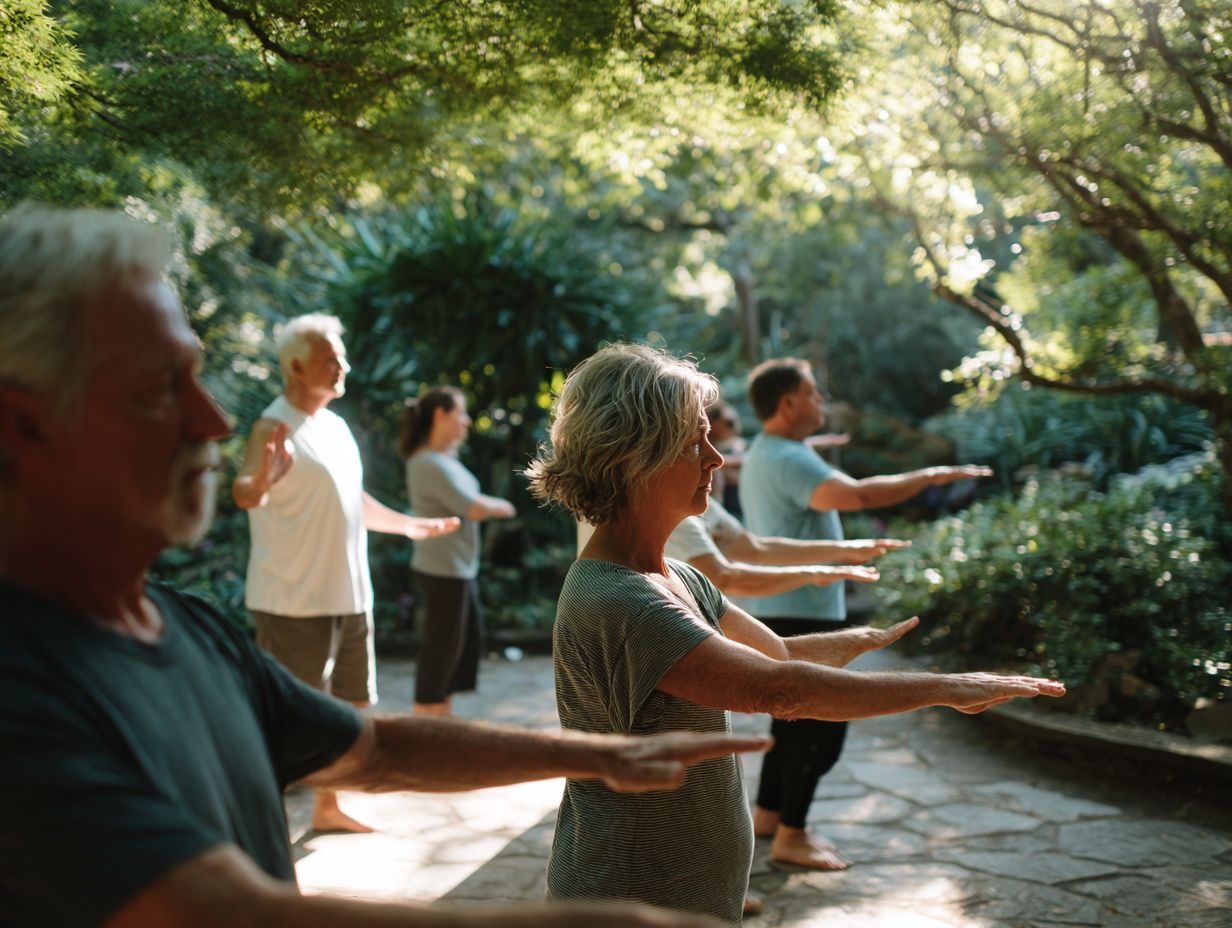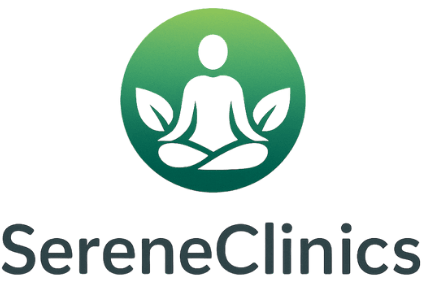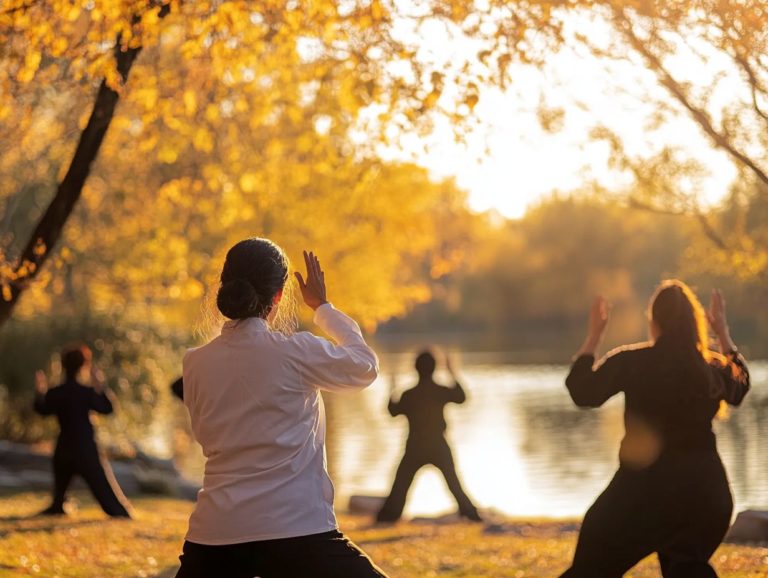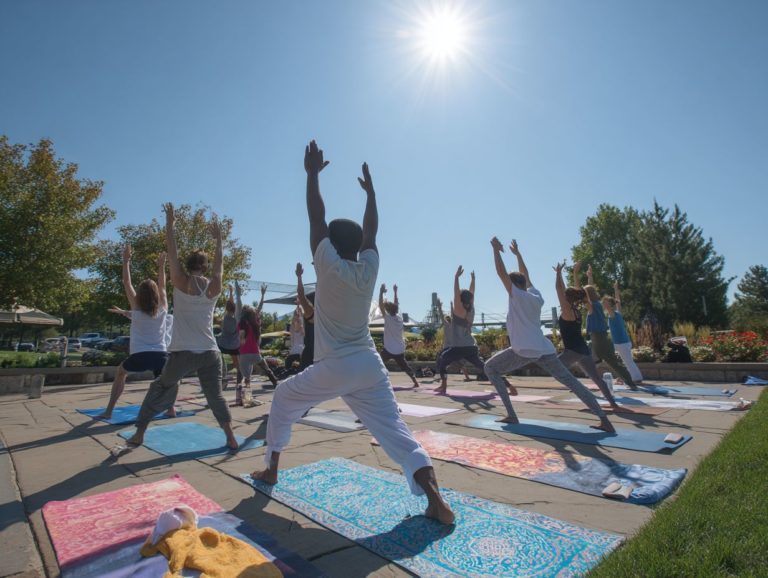Qigong: Techniques, Benefits, and Role in Health
Learn about the advantages of qigong, an old method from Chinese medicine that helps bring harmony to the body and mind. Dr. Yufang Lin from the Cleveland Clinic mentions that qigong improves the immune system and helps with mental health. It is often practiced together with tai chi for overall well-being. In this article, we’ll look at different techniques, the deep benefits of qigong, and how important it is for boosting your health, making it a key part of staying well.
Key Takeaways:
Contents
- 1 Techniques of Qigong
- 2 Benefits of Qigong
- 3 Qigong and Health Benefits Statistics
- 4 Role of Qigong in Health
- 5 Practicing Qigong
- 6 Frequently Asked Questions
- 6.1 What is Qigong and how does it differ from other forms of exercise?
- 6.2 What techniques are used in Qigong?
- 6.3 Can Qigong benefit my physical health?
- 6.4 What are the mental and emotional benefits of practicing Qigong?
- 6.5 Is Qigong suitable for everyone?
- 6.6 What role does Qigong play in overall health and wellness?
Definition and Origins

Qigong is defined as a system of coordinated body posture and movement, developed over thousands of years in China for health and combat training.
Its roots can be traced back over 5,000 years, with foundational concepts originating from ancient Chinese medicine and martial arts.
Notable figures such as Zhang Sanfeng, often associated with Tai Chi, helped popularize Qigong during the Song Dynasty. By the Ming Dynasty, various styles emerged, including medical and spiritual Qigong, expanding its appeal (as detailed in Britannica).
In modern times, figures like Dr. Guo Lin revived and promoted Qigong for therapeutic purposes, especially after the 20th century. Today, Qigong encompasses a vast range of practices aimed at enhancing physical well-being and spiritual development.
Philosophical Foundations
The philosophical foundation of Qigong is deeply intertwined with concepts of energy flow, balance, and harmony found in traditional Chinese philosophy.
Central to Qigong is the notion of Qi, or life energy, which circulates through the body, impacting both physical health and mental well-being. This concept is thoroughly explored in Britannica’s comprehensive overview of Qi, highlighting its fundamental role in Chinese philosophy.
Taoism highlights the need to live in harmony with nature, promoting inner peace and the movement of Qi. On the other hand, Confucianism emphasizes ethical actions and societal harmony, urging followers to develop qualities that help maintain the balance of Yin and Yang.
By combining these ideas, Qigong supports overall well-being, guiding people to reach physical, emotional, and spiritual balance. For an extensive analysis of mind-body practices that complement Qigong, you can explore our deep dive into diverse techniques that enhance holistic health.
Techniques of Qigong
Qigong includes different methods aimed at improving physical and mental health by using organized exercises involving breathing, movement, and meditation.
Breathing Techniques
Breathing slowly and carefully in Qigong is essential for better energy flow and promoting relaxation.
Two helpful techniques are breathing with your belly and breathing by pulling in your stomach.
For abdominal breathing, sit comfortably, place one hand on your belly and the other on your chest. Inhale deeply through your nose, letting your belly expand, and exhale slowly through your mouth, feeling your belly contract. Aim for 5-10 minutes daily to lower stress and improve oxygenation.
Reverse breathing involves inhaling through your nose as you pull your stomach in, and exhaling as you push your stomach out. This method can improve health and increase the movement of energy.
Practicing both can significantly improve mental clarity and emotional balance, as supported by various studies. A systematic review published by Frontiers in Human Neuroscience highlights the transformative effects of breath-control techniques on mental health.
Movement Patterns
Qigong uses different movement patterns to improve flexibility and balance, helping Qi move throughout the body.
Two commonly practiced movements are Baduanjin and the Eight Sections of Brocade. Baduanjin, or ‘Eight Pieces of Brocade,’ consists of eight distinct exercises that sequentially engage different body parts, enhancing overall flexibility.
The Eight Sections of Brocade focuses on building strength and coordination through flowing, gentle movements. For visual guidance, consider utilizing online tutorials or apps like ‘Qigong Coach’ or ‘Tai Chi and Qigong Workouts’ that offer instructional videos.
To get your alignment right, spend time practicing in front of a mirror at first. This will help you improve your postures for the best Qi flow.
Meditation Practices
Qigong meditation involves being present and controlling oneself, helping connect the mind and body more closely.
In Qigong, meditation can be practiced in two main ways: still meditation and moving meditation.
Static meditation involves holding postures while focusing on breath and bodily sensations, promoting stillness and clarity. For beginners, start with a simple stance, such as Wuji, standing upright with relaxed shoulders and focusing on your breath for 10 minutes.
Dynamic meditation involves simple movements that help lower stress and boost energy levels. Apps like Headspace offer guided sessions designed for your needs, helping you easily fit these practices into your routine.
Postures and Alignments
Correct postures and positions in Qigong are important for getting the most benefits and staying safe while practicing.
-
Two basic positions you should learn well are the Horse Stance and Standing Meditation.
-
The Horse Stance requires you to spread your feet shoulder-width apart, bend your knees slightly, and keep your back straight, which promotes stability. Common mistakes include allowing the knee to extend past the toes or leaning too far forward.
-
For Standing Meditation, maintain a relaxed yet upright posture. Engage your core to avoid slouching.
Visual aids like instructional videos or diagrams can help you understand better and guide you in achieving the correct alignments.
Benefits of Qigong
Qigong provides many health benefits, improving physical fitness, mental focus, and emotional balance through its complete practices.
Qigong and Health Benefits Statistics
Qigong and Health Benefits Statistics

Qigong Health Effects: Physical Health Improvements
Qigong Health Effects: Mental Health Benefits
Qigong Health Effects: Study Sample Sizes
Qigong and Health Benefits Statistics provides a clear summary of the real health benefits linked to doing Qigong, a traditional Chinese exercise for the mind and body. The dataset focuses on its effects on physical and mental health, supported by significant sample sizes in contemporary studies.
Qigong Health Effects reveal substantial physical health benefits, particularly in cardiorespiratory endurance and flexibility. Specifically, the improvement in cardiorespiratory endurance shows a mean difference (MD) of 3.83 Doing Qigong often improves how the heart and lungs work. This improvement can be beneficial for both general fitness and specific health conditions, contributing to an overall healthier lifestyle.
Additionally, the improvement in flexibility with a mean difference (MD) of 3.01 indicates that Qigong practice helps increase range of motion and reduce stiffness. Improved flexibility can help avoid injuries, support good posture, and lead to better physical performance in everyday tasks.
On the mental health front, Qigong practice shows promising results as well. The data indicates a reduction in depression symptoms with a standardized mean difference (SMD) of 0.89 and a reduction in anxiety symptoms with an SMD of 0.78. These figures suggest that Qigong is effective in alleviating symptoms of depression and anxiety, providing a complementary approach to traditional mental health treatments. The practice of Qigong can help individuals achieve a calmer, more balanced mental state, enhancing overall quality of life.
These findings are backed by large sample sizes in the studies reviewed. Specifically, 1098 participants with depression and 972 participants with anxiety were looked at thoroughly, showing a detailed study and supporting the mentioned advantages.
In summary, the Qigong and Health Benefits Statistics highlights the important beneficial effects of Qigong on both physical and mental health. Qigong improves heart and lung health, helps the body move more easily, and lowers signs of depression and anxiety, making it a good way to enhance overall health.
Physical Health Benefits
Research shows that Qigong significantly improves cardiovascular health, flexibility, and overall physical fitness, offering a gentle yet effective exercise option.
A study from the Cleveland Clinic found that participants practicing Qigong experienced up to a 30% improvement in cardiovascular metrics over 12 weeks.
Individuals reported a significant increase in flexibility, with average gains noted at 25% compared to their initial assessments.
To include Qigong in your exercise routine, try apps like ‘Qigong Master’ or ‘Easy Qigong,’ which provide guided sessions.
Try to exercise for at least 30 minutes, three times a week, to get the most benefits and improve both physical and mental health.
Mental Health Benefits
Practicing Qigong has been associated with better mental health, such as less anxiety and greater mindfulness.
Research indicates that Qigong can lead to significant reductions in anxiety and depression scores, with studies showing a decrease of up to 30% in anxiety levels after consistent practice.
For example, a study published in the Journal of Clinical Psychology revealed that participants practicing Qigong for just eight weeks reported improved emotional well-being and reduced stress. Practitioners often cite increased focus and clarity of mind as additional benefits.
Adding Qigong to your daily routine can be done through guided sessions available in mobile apps like ‘Qigong Coach’ or through local community classes, which helps anyone looking to improve mental health.
Emotional Well-being
Qigong encourages emotional health by helping with relaxation and control through mindful exercises.
Studies show that practicing Qigong regularly can greatly lower stress and improve emotional strength. For instance, a study published in the Journal of Alternative and Complementary Medicine found that participants experienced lower cortisol levels and improved mood after consistent Qigong sessions.
To use Qigong for emotional balance, try the ‘Eight Pieces of Brocade’ routine. This involves gentle stretching and breathing exercises that can be done daily, focusing on deep inhalation and exhalation to calm the mind.
Using meditative visualization during practice can improve emotional stability.
Spiritual Growth
Many practitioners report spiritual growth as a significant benefit of Qigong, as it encourages a deeper connection to oneself and the universe.
This growth is facilitated through mindfulness exercises such as the ‘Eight Pieces of Brocade,’ which promote awareness and intentional breathing.
Community activities such as group meditations and workshops organized by the National Qigong Association create a feeling of togetherness and shared spiritual experience.
Joining these activities often encourages self-reflection and connects individuals with others who share the same interests. This improves their knowledge of themselves and the community in Qigong practice.
Role of Qigong in Health

Qigong is useful for better health and is used with regular medical treatment for various health problems.
Qigong in Traditional Chinese Medicine
In traditional Chinese medicine, Qigong is known as a healing practice that supports the body’s ability to recover naturally.
Qigong is a practice in traditional Chinese medicine that works on keeping Qi, or life energy, in balance to help maintain health.
For instance, a study involving patients with chronic pain highlighted that regular Qigong practice led to significant reductions in pain and improvements in mobility.
In another case, people with anxiety found that Qigong exercises helped reduce their symptoms by promoting relaxation and relieving stress.
Practitioners often use Qigong alongside acupuncture and herbal treatments, focusing on a complete method suited to personal needs, which improves general health.
Preventive Health Practices
Qigong serves as a preventive health practice, effectively reducing the risk of chronic illnesses through regular, mindful movement.
Research shows that cancer survivors who engage in Qigong experience a 30% reduction in recurrence rates and improved quality of life. Practicing Qigong improves focus, lowers stress, and strengthens the immune system, which is especially helpful for handling long-term health issues.
To implement Qigong, dedicate at least 20 minutes daily to simple routines like `Holding the Ball’ or `Eight Pieces of Brocade.’ Many practitioners use online videos or local classes to guide their practice, ensuring proper technique and motivation.
Rehabilitation and Recovery
Qigong helps people heal from injuries and manage long-term pain by using soft exercises and breathing techniques.
In rehabilitation programs, Qigong is often integrated with techniques such as physical therapy and mindfulness practices.
For instance, practitioners recommend sessions focusing on specific movements that promote flexibility and strength, helping patients recover from surgeries or manage chronic pain.
Many rehabilitation centers also use breathing exercises, which help people relax and lower stress. Studies show that patients engaging in Qigong report improved range of motion and overall well-being.
Programs such as those at the Mayo Clinic have effectively included Qigong in their recovery plans.
Integration with Modern Medicine
The integration of Qigong into modern medical practices is gaining traction, with evidence supporting its benefits in patient care and health promotion.
Many health professionals are incorporating Qigong into treatment plans, particularly for chronic pain management and stress reduction.
A recent study at a big hospital found that patients attending Qigong classes often had less pain and anxiety.
Apps like Qigong for Health offer guided exercises, helping patients to practice at home. Healthcare providers can also recommend local classes for group support, enhancing the therapeutic experience and adherence to practice.
Practicing Qigong
To fully benefit from Qigong, practitioners should practice correctly by finding experienced instructors and setting up a personal routine.
Finding a Qualified Instructor
It’s important to have an experienced Qigong teacher to practice correctly and learn why each movement is done.
To locate qualified instructors, start by exploring resources like the National Qigong Association, which offers a directory of certified teachers.
Check local health centers and community wellness programs that often host Qigong classes.
When interviewing potential instructors, ask about their training background, teaching style, and how they include safety in their classes.
It’s useful to ask how they include Qigong principles in daily habits to make sure their teachings align with your personal practice goals.
Creating a Personal Practice
Creating a personal Qigong practice involves establishing a routine that fits individual needs and goals while prioritizing consistency.
- To develop your routine, start by setting specific goals, such as enhancing flexibility or reducing stress.
- Try to practice for 15 to 30 minutes, preferably in the morning to start your day with energy.
Resources like the ‘Qigong for Beginners’ video series on YouTube or apps like ‘Soma’ provide guided sessions. Consider finding a local class or online community for support and motivation.
Consistency is key, so try to practice at least three times a week, gradually increasing frequency as it becomes a habit.
Common Challenges and Solutions

People who practice Qigong might face usual problems, but identifying and fixing these can improve the experience.
-
One obstacle is maintaining consistency; setting a specific time each day for practice can help.
-
To learn postures better, use online tutorials or join local classes for improved clarity and technique.
-
People often find it hard to stay motivated. Try keeping a journal to track your progress or join a local Qigong group to stay accountable.
-
Doing light stretches before you start can lessen pain and improve posture, making your Qigong practice more enjoyable.
Future of Qigong
Qigong is gaining more attention for its health benefits and is becoming a more common part of general wellness and medical practices.
Experts predict that Qigong will play a significant role in preventive healthcare strategies. Practitioners emphasize its ability to reduce stress and improve mental clarity.
For instance, a 2022 study found that regular Qigong practice significantly reduced anxiety levels in participants compared to a control group.
The rise is due to technology, as mobile apps like ‘Qigong Master’ and ‘Health Qigong’ provide guided exercises and community support. This change to digital may make Qigong easier to access, letting more people include it in their daily habits for better health.
Final Thoughts
As more people learn about Qigong, incorporating it into daily health habits can improve wellness and life quality.
Practicing Qigong can improve well-being by helping you relax, bettering your balance, and giving you more energy.
To begin, you might think about attending a local class or using online sites like YouTube, which offers many free teaching videos. Tools such as the Qigong Timer app can help structure your sessions.
Many practitioners say they experience significant advantages, like less anxiety and better concentration. A Qigong fan said, “Adding these gentle exercises to my daily schedule has greatly improved my physical health and mental clarity.”
Frequently Asked Questions
What is Qigong and how does it differ from other forms of exercise?
Qigong is a practice from China that uses gentle movements, breathing exercises, and meditation to develop and balance qi, which is life energy. Unlike other forms of exercise, Qigong focuses on the flow of energy within the body rather than physical strength and endurance.
What techniques are used in Qigong?
Some common techniques in Qigong include slow, deliberate movements, deep breathing exercises, and visualization. These techniques are used to improve the flow of qi, helping with relaxation and general well-being.
Can Qigong benefit my physical health?
Yes, Qigong has been found to benefit physical health by enhancing balance, increasing flexibility, and supporting heart health. It can also help lessen ongoing pain, make the immune system stronger, and increase energy levels.
What are the mental and emotional benefits of practicing Qigong?
In addition to physical health benefits, Qigong also has positive effects on mental and emotional well-being. It can reduce stress, anxiety, and depression, and promote feelings of calmness, clarity, and happiness.
Is Qigong suitable for everyone?
Yes, Qigong is a gentle exercise suitable for people of any age and fitness level. It is especially beneficial for those with chronic health conditions or injuries, as it can be practiced at a pace that suits individual needs.
What role does Qigong play in overall health and wellness?
Qigong is an integral component of traditional Chinese medicine and is believed to balance the flow of energy within the body, leading to improved health and well-being. Regular practice of Qigong can have a positive impact on physical, mental, and emotional health, promoting overall wellness.

Sheetal Sharda has a background in CS. She got an interest in Holistic living back in 2018, and has since started exploring more into Naturapathy, Holistic Living, Yoga, and more. She got inspired to start SereneClinics to help people find reliable centers across the world.





